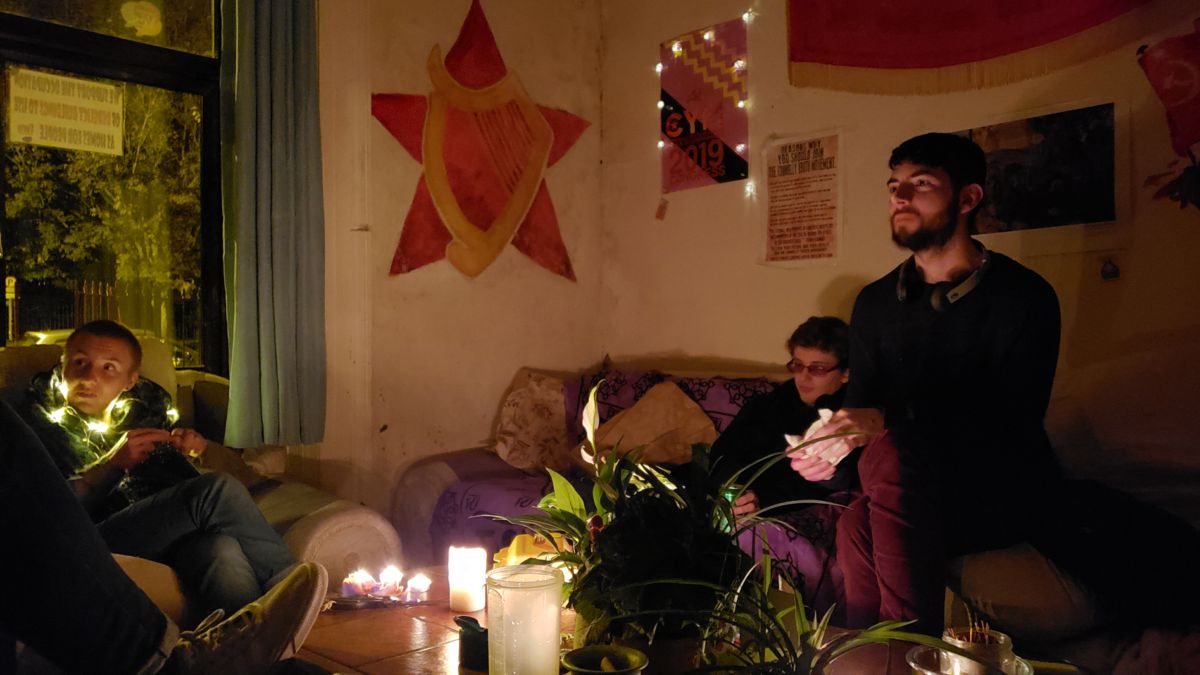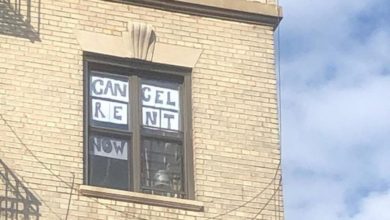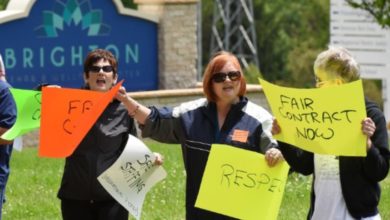With hundreds of thousands of people from New Orleans still dispersed throughout the United States, a struggle is brewing. Will New Orleans be rebuilt? And for whose benefit?

Will the African-American communities in the Lower Ninth Ward, where generations of families spent their lives, be rebuilt? Or will the city be built for the benefit of wealthy property owners and corporations?
Black Commentator publishers Glen Ford and Peter Gamble warned of the “ethnic cleansing of New Orleans.” (“The Battle for New Orleans,” Oct. 27, 2005) “Katrina hurled New Orleans into a kind of time machine, instantly fast-forwarding the city to an advanced stage of the gentrification process,” they wrote.
While the process in New Orleans may be on fast forward, gentrification—the displacement of poor and working-class communities, most often Black and Latino, by wealthy, high-rent districts—is taking place in cities around the country.
Stages of gentrification
People frame gentrification in different ways. Some people think of it as a process of displacement of people, creating changes in the social, economic, cultural and physical aspects of a neighborhood. Others believe that gentrification is essentially an economic process that converts working-class neighborhoods into more affluent communities. Both characterizations are correct. Gentrification brings economic change to communities as it displaces long-time residents. It is primarily an urban phenomenon that adversely affects working-class communities.
Gentrification is not new to the United States. In the 1950s and 1960s, the federal government sponsored urban-renewal—or what was popularly described in the Black community as urban removal—in certain cities with lower economic development. Later, in the 1970s and early 1980s, the “back-to-the-city” movement developed. Today, working-class neighborhoods in major U.S. cities, like Harlem and Washington Heights in New York City and San Francisco’s Mission District, are the targets of major gentrification efforts.
Most of the communities that face gentrification have suffered population loss over a period of time. Higher-income residents and others with economic means have left these communities. Banks, landlords and business owners have disinvested in the communities and drained their economic resources.
Gentrification is a gradual process that usually unfolds in stages. The first stage entails some type of public or private investment. Developers buy and rehabilitate vacant buildings at low cost, creating little anger or displacement initially. This phase lasts several years. The physical condition of the community remains the same. (Kalima Rose, “Beyond Gentrification: Tool for Equitable Development,” Shelterforce, May/June 2001)

During the second stage of gentrification, information about the new condition of the community gets out—low housing costs and more facilities and amenities in the community. Affluent people move into this “new community” to take advantage of the improved situation.
As a result, housing prices begin to rise and the landlords start to evict long-time tenants and residents in order to accumulate greater revenues by renting or selling to wealthier people. At the same time, dislocation and conflict start to erupt.
The cultural, social, economic and political aspects of the community change during this phase. Homes and apartments are purchased by wealthier people, causing down payments to increase. The new inhabitants are usually more interested in urban and cultural amenities, such as high-end restaurants, coffee chains, boutiques and music clubs. The community at large feels left out, since many residents cannot afford these new conveniences.
In the final stage of gentrification, rent prices skyrocket and evictions of long-time residents become more and more common. New residents show less tolerance for social services, and some forms of commerce and culture are considered unwanted. The original residents of the community are ousted along with their industries, shops and cultural and religious institutions. In Harlem, a historically African-American community, Black merchants are being forced out of small stores by the skyrocketing rent prices because of gentrification. The same process is happening in cities across the country.
The housing market and gentrification
Gentrification is a result of the overall drive in capitalist society to make profits for those who benefit from the system. Capitalist owners control the economic, social and political apparatus of U.S. society. Bankers, industrialists, landlords and developers belong to this class. The capitalists’ goal of greater profits is hindered in “undesirable” urban areas where workers and oppressed people live.
Under capitalism, investing and disinvesting in communities is driven by the capitalist owners and their social institutions. Banks, credit unions and other financial institutions, along with landlords and developers, play major roles in the process of gentrification and community disinvestment.
Landlords and housing developers invest large sums of money to construct and renovate buildings. They generally borrow money from banks to carry out their plans. Buildings are not replaced for many years, because that requires a major financial investment. The value of these buildings depreciates over time. If the building is an apartment or commercial building, the landlord can deduct from his taxes the amount that the building has depreciated.
When landlords and developers decide to upgrade worn out parts of their buildings, such as unsafe roofs, old plumbing or electrical systems, those upgrades are new investments in the property. If landlords decide to keep their buildings in good shape in a certain community, the area will not be threatened with gentrification. It will be more likely to remain prosperous and attract higher-paid professionals to live there. The housing market will reflect the quality of the buildings in the area—prices will stay high. This gives landlords an incentive to remodel more of their properties since they can command rents high enough to get a good return on their investment.
In other areas, when buildings get older and their value depreciates, landlords decide not to repair or upgrade dilapidated buildings. This usually happens in working class communities. The capitalist-run housing market classifies people according to their income level and race. If a community is populated by lower-income residents, landlords tend to neglect those properties. Any repairs or renovations would require higher rents, which the tenants cannot afford. Higher-income people generally are unwilling to move into those areas.
The capitalists let the buildings decay if they have decided that it isn’t profitable to continue to invest in that particular community. With the money they save on repairs, they buy other properties elsewhere, areas where they can extract higher profits.
The absence of new investment in a community is a process of disinvestment, or reduction of capital in that area. Landlords and developers don’t care about people’s basic housing needs.
Displacing the working class
As new investments are made in communities marked for gentrification, people’s lives quickly change. Working-class people are impacted the most in the gentrification process. Certain sectors of the working class, like undocumented workers, are the most vulnerable.
“Renters are clearly most vulnerable to displacement, especially when they lack legal immigration status or do not speak English, as is often the case in San Francisco’s Mission District. Lower-income renters are ill-equipped to afford price increases from owners who want to upgrade, charge market-based rents or convert their buildings to condominiums.
“In a dwindling number of cities (including Washington and San Francisco), rent controls shield renters from dramatic rent increases, but frequently do not effectively target benefits to low income households who need affordability protection most.” (Maureen Kennedy and Paul Leonard, “Gentrification: Practice and Politics,” LISC Center for Home Ownership, July 2001)
Gentrification is undeniably a racist process. In many gentrified areas, higher-income white households have replaced lower-income minority households. This is what happened in communities that experienced “white flight” and painful urban renewal in the 1950s and 1960s. The same process continues in cities throughout the United States today.
Displacing the original inhabitants of a working-class community changes its ethnic and class composition over a period of time. People with lower incomes no longer can move into the community, and those already living there have a hard time staying in the area.
Gentrification has been happening on a wide scale in the United States for decades. In many areas, people have fought against its negative impacts on their communities.
In the late 1990s, anti-gentrification activists forced Oakland, California, mayor Jerry Brown to set aside for low-income workers some of the 10,000 new residences being constructed in downtown. In New York, tenant activists pushed hard for and won an anti-eviction and rent control city ordinance. Successful anti-gentrification struggles have also occurred in Atlanta, Cleveland, Portland and Washington, D.C.
Reforms are a step forward for everyone struggling against gentrification, but they do not provide a long-term solution to the problem. Problems with community development cannot be fully resolved under capitalism—where homes and apartments are built for private profit, not people’s needs. Overturning capitalism and building socialism, a new social system, will allow the working class to control the properties of landlords and developers and use them to meet people’s needs, not for profit.
Photo: Bill Hackwell
Photo: Bill Hackwell





